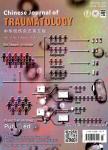Seizure related injuries — Frequent injury patterns, hospitalization and therapeutic aspects
Seizure related injuries — Frequent injury patterns, hospitalization and therapeutic aspects作者机构:Department of TraurmaHand and Reconstructive SurgeryGoethe University FrankfurtFrankfurt Am MainGermany Epilepsy Center Frankfurt Rhine-MainDepartment of NeurologyGoethe University FrankfurlFrankfurt Am MainGermany LOEWE Center for Personalized Translational Epilepsy Research(CePTER)Goethe-Universitat FrankfurtFrankfurt Am MainGermany Department of Neurology and Epilepsy Center HessenPhilipps-University MarburgMarburg(Lahn)Germany
出 版 物:《Chinese Journal of Traumatology》 (中华创伤杂志(英文版))
年 卷 期:2022年第25卷第5期
页 面:272-276页
核心收录:
学科分类:1002[医学-临床医学] 100204[医学-神经病学] 10[医学]
基 金:University Hospital Frankfurt am Main
主 题:Epilepsy Wounds and injuries Falls Quality of life
摘 要:Purpose: Epileptic seizures frequently result in distinct physical injuries, fractures, traumatic brain injuries and minor trauma. The aim of this study was to retrospectively determine the frequent injury patterns due to seizure episode and to analyze consecutive acute medical care. Methods: This retrospective mono-center study was conducted at Frankfurt University Hospital, Frankfurt am Main, Germany between January 2007 and December 2017. Epilepsy patients with seizure-related fractures admitted to the emergency department were identified via a retrospective systematic query in the hospital information system using the ICD-10 German modification codes G40.0—G40.9. Patients with an unclear diagnosis of epilepsy were excluded. Sociodemographic as well as disease specific aspects were analyzed. Descriptive and Kruskal—Wallis one-way analysis of variance were used for statistical analysis. Results: A total number of 62 epilepsy patients were included. The mean age was 58.1 years. Fractures concerned the upper extremity most frequently (43.5%,n= 20), and 70.0% (14/20) were humerus fractures. Admission to intensive care unit for acute trauma care was necessary in 29.0% patients (n = 18), and surgery in 45.2% patients (n = 28). Twenty-five patients (26.6%) showed clinical or radiological signs of traumatic brain injury. Provoking factors were identified in 20 patients (32.3%), i.e., acute withdrawal or excess of alcohol (n = 15), relevant sleep deprivation (n = 2), and intoxication or withdrawal of other illegal drugs or trivial infect (n = 1 for each) and non-compliance with anti-seizure drugs (n = 1). A decreased T-score (-1.04 ± 1.15) and Z-score (-0.84 ± 0.75) compared to healthy subjects were found. Conclusion: Fractures in upper extremities, trunk and craniocerebral trauma occur frequently as seizure-induced injuries. Alcohol excess and withdrawal are important provoking factors and should be targeted with preventive measurements to avoid seizure related injuries and accidents.



